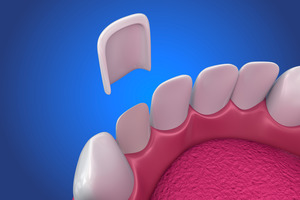
You likely already know that veneers can be used to cover all kinds of aesthetic issues in order to greatly enhance your smile. However, you may also have heard that a bit of enamel needs to be taken off your teeth before veneers can be placed. Why is this necessary, and exactly how much enamel will be taken off? You can find out the answers to these questions right now before you take the first step of the veneers process.
Why is Enamel Removed Before Veneers?
There are a couple of reasons why removing enamel from the teeth that will receive veneers is a necessary step:
- Trying to place veneers without taking enamel off first would cause the teeth in question to look larger and bulkier than they should. Removing a bit of enamel beforehand will help ensure that your veneers appear to be the right size.
- Removing enamel will slightly change the surface of your teeth. This makes it easier to attach your veneers.
So, How Much Enamel Will Be Taken Off?
Under normal circumstances, about half a millimeter of enamel will be removed from your tooth – in other words, a very small amount. Your dentist will naturally try to be as conservative as possible to protect the overall structure of the tooth.
One thing to note about enamel is that while it may look like bone tissue, it actually doesn’t have any living cells. In other words, the enamel that was taken away will not grow back. For this reason, the process of getting veneers is irreversible; the treated teeth will need to remain covered at all times in the future.
What Exactly Will the Veneer Process Look Like?
You will need at least two appointments to have veneers placed. The first visit is when your dentist will take the requisite amount of enamel off of your teeth (but not before your mouth is numbed to prevent discomfort). Once the teeth are ready, impressions of your smile will be taken, and you’ll receive temporary veneers.
A dental lab will create your permanent veneers based on your impressions. Said veneers will be sent to your dentist, who will place them on your teeth during your second appointment. A few minor adjustments might need to be made to ensure that the veneers fit properly.
With veneers, your dream smile could be within reach. Be sure to speak to your dentist if you have any questions about the veneer process, whether it’s regarding enamel removal or something else.
About the Author
Dr. Jason Herres went to Temple University for dental school, and he has previously run a dental office at sea on a naval warship. His current practice, Dentistry for Life in Lancaster, provides modern solutions for a wide variety of dental health issues. He can also offer veneers and other cosmetic treatments. To schedule a consultation with Dr. Herres, visit his website or call (717) 569-3911.
